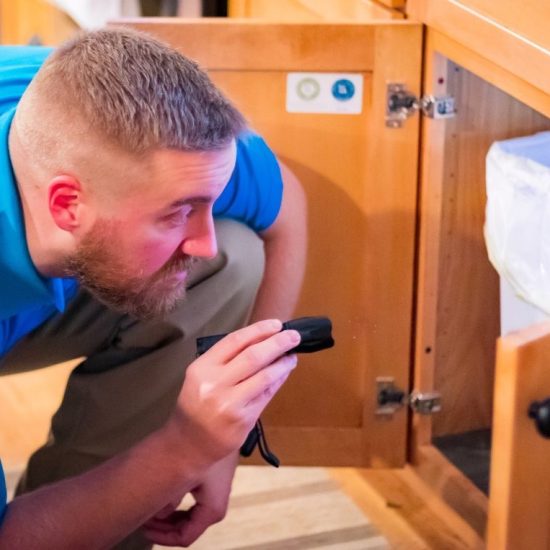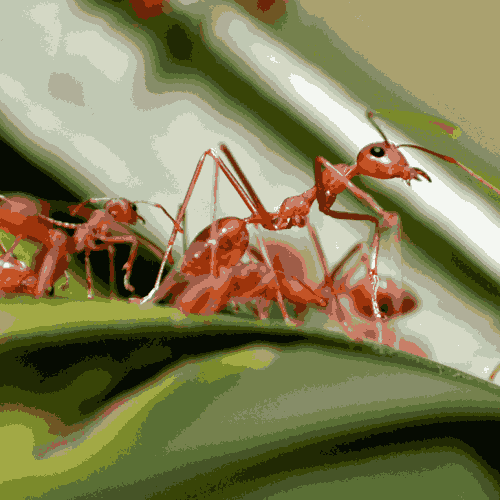ANT PEST CONTROL
COLUMBUS OHIO
Protect your home from ants year round with one of our programs!
Standard Program
General Pest Control & Rodent-
General Pest Control & Rodent Protection
-
Scheduled Quarterly Service 4x a Year
-
Interior and Exterior Treatment
-
Guaranteed Services
Premium Program
General Pest Control & RodentMosquito & Tick
-
General Pest Control & Rodent Protection
-
Scheduled Quarterly Service 4x a Year
-
Interior and Exterior Treatment
-
Guaranteed Services
-
6 Mosquito & Tick Services
-
Bundled Pricing for Convenience
Elite Program
General Pest Control & RodentMosquito & Tick
Termite
-
General Pest Control & Rodent Protection
-
Scheduled Quarterly Service 4x a Year
-
Interior and Exterior Treatment
-
Guaranteed Services
-
6 Mosquito & Tick Services
-
Bundled Pricing for Convenience
-
Termite Service Plan
-
10% Off Additional Service Types
How We Treat for Ants

House Foundation (Outdoors)
Creating a barrier around the homes perimeter of the foundation will help to prevent ants from entering. Around the homes foundation as well as around windows, door, eves, etc along with a granule around the perimeter is how our technicians create that barrier. Maintaining and pruning trees, shrubs and flowers will help keep the ants away from the perimeter as well, especially ones touching the homes foundation or walls, as that can be a way to access the structure without having to cross the insecticide barrier. This is recommended every 90 days to maintain the perimeter barrier.

In the home (Indoors)
Ants are smart pests and they will avoid areas treated if the treatment isn't precise to the ant you are dealing with. If entire walls, floors, cupboards, countertops, etc is treated, the ants will often detect that and will wait until the residues have evaporated or simply been removed with cleaning. Targeted areas for ants are cracks and crevices as well as baits in tamper-resistant containers. Dusts can be puffed into holes for good coverage where the ants are known to be active. Some insecticides work when worker ants carry the chemical back to the nest. "Bug bombs" (total release aerosols) are not effective for ant control since the fumes do not reach the nests.
How to protect your home from common ants in Ohio

Most Common Types of Ants in Ohio
Red Fire Ants are a common pest in the south but can be found as far north as Ohio. Queens and workers have a shiny red head and thorax while the males are completely black. They build their nest in a mound that is dome-shaped and they crust it over making it weather-resistant.
The reason they can be found more south is due to the type of foundation they like to make their mounds with. They seek out sandy soil or clay soil which is not as available in Ohio as the south.
Red Fire Ants feed on both dead and living things such as; plants, fruits, seedlings, shoots and animals. They can do a lot of damage to growing flower buds and fruits. Their queen can produce up to 1600 eggs a day! Their name is derived from the powerful punch they deliver with the sting and burn of their bite.
“Little black ants” are what we are all known to call them due to their small size in comparison to other ant species. They have a small stinger, but it is too small to be effective. They usually make their home around urban and industrial areas.
They can be found throughout most of the state of Ohio. Once they have started an invasion, the ants go marching! You can follow their trail of marching ants to the source. That source can be a variety of things too! Black Ants are omnivorous so they are not picky when it comes to their next meal. Sweets, other insects, seeds as well as other items will attract them to your picnic.
They follow scent-marked trails to find their food. Once in a home, building or office, they hide in cracks and crevices and can be found on the walls moving in their trails. They build nest in dark, damp areas like under rocks, cement cracks, under trees, wall voids, baseboards, basements and even under your carpeting!
Carpenter Ants are commonly believed to eat wood. That is not the case though. They actually excavate the wood! Another myth behind carpenter ants is they are termites. Although similar in a few ways, they are not the same. Carpenter ants can be found in damp or wet wood due to them needing water to survive. They usually nest outside because the outdoors provide all of what they require. If found indoors, they are active in the spring and summer (because its warmer and not as damp outside) and your underground moisture issue you aren’t aware of, provides that damp wood they like. If an infestation is already present going into late winter and early spring, you could see them being active.
Carpenter ants prefer to feed on things with fat, sugar and meat. They make nests in hollow areas like wooden log, wall or ceiling voids. The ants venture out of their nests and create colonies around 100 yards away from their nests. So, if you think you found their nest, you might have only discovered 1 colony!
Pavement Ants (concrete ants, cement ants) are dark brown or black and have lines on their head and thorax. They feed on a variety of items just like the black ant, but they are particularly drawn to the sweets. Sugar, syrup, honey, fruits and nectars are pavement ants go to… but will eat any food that they come across. They collect and keep dead insects in their nests.
Productive pavement ants are winged and swarm in the spring. Once the nest gets too warm in the summer, they leave the area. It is normal to see them form a new swarm in the late fall all the way into February. Once they are done mating, queens lay their eggs in a hole in the soil.
As you can guess by their name, they build nests under large rocks, pavement slabs, sidewalks or building slabs. They find their way in through cracks and crevices of slabs and walls.
Odorous House Ants are tiny and quick! Like many other ants, they are brown and black. After a heavy rain, they make their way to kitchens in many homes. They like to eat many things in your home from your food to dead insects, but sugary foods and drinks are what they are looking for. While outside, they feed on honeydew an nectar they find.
So, you know they are tiny and fast, but “odorous” doesn’t describe either of those things… where does that name come from? Well, when crushed, they give off a rotten smell. This smell has been described as a rotten coconut or blue cheese.
They make nests just about anywhere, but like other ants, they look for that warm, damp area. Once they are disturbed, they run erratically around. They do contaminate food that they touch. Just because you have swiped the ants off your food, does not make it safe to eat!
Carpenter ants, or alates, are winged ants that swarm. Their wings are transparent with the forewings being much larger than the hind wings. Winged females have a larger body than winged males. Carpenter ants do not lose their wings quickly after swarming like termites.
Ants & Weather

Ants don't hibernate
It's cold. We assume the ants hibernate and won't bother us or our homes. That is far from the truth. Ants go into something called "diapause" or a state of low-energy that allows a whole colony to survive without eating for months. This happens with the conditions outside are harsh and cold. If the ants are inside your home, it's not harsh environments and they are living life to it's fullest. Even when outside, Ohio's weather can fluctuate in the winter from a deep freeze to 60 degree spring like weather in hours! This would cause ants to come out of diapause to grab a snack.

Ants and heavy rains
After a period of heavy rain, we can always count on ants appearing in our homes! Being washed out of the ground with heavy rain, the ants are trying to survive. They are searching for food and higher grounds to stay safe. Best place for that? Same place we go for food and shelter... our homes and businesses!
How to get rid of ants in car
If you find ants in your car or vehicle, vacuum thoroughly. This will get rid of some of the ants and any food scraps they will be eating on. You can also place some ant bait containers in the car. Leave them there, it might take some time. Continue to vacuum regularly and try to keep food out of the vehicle.






